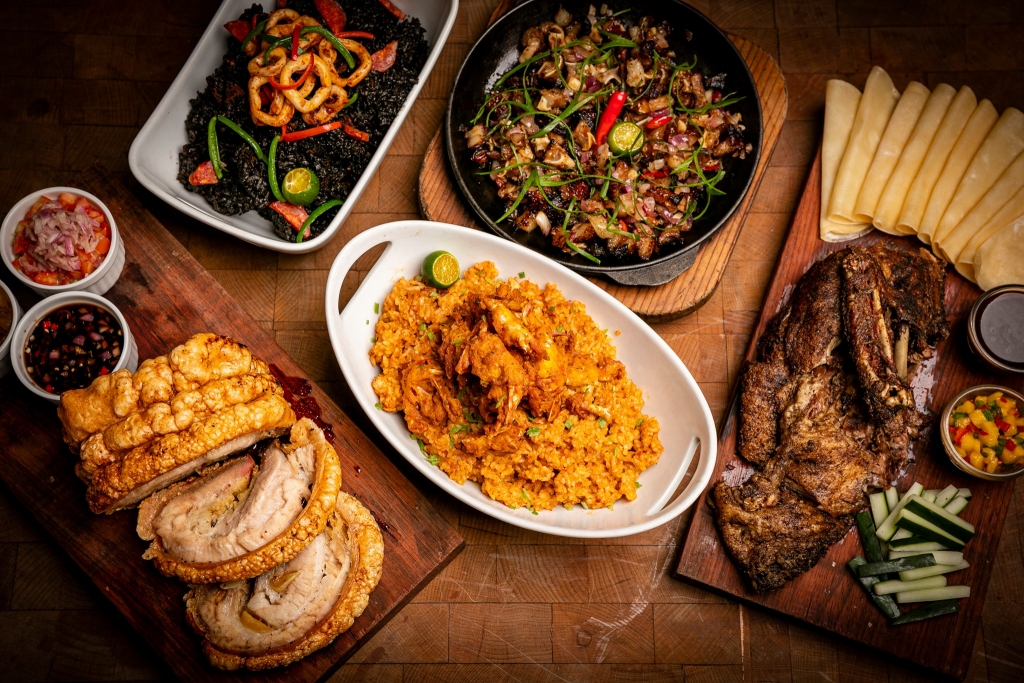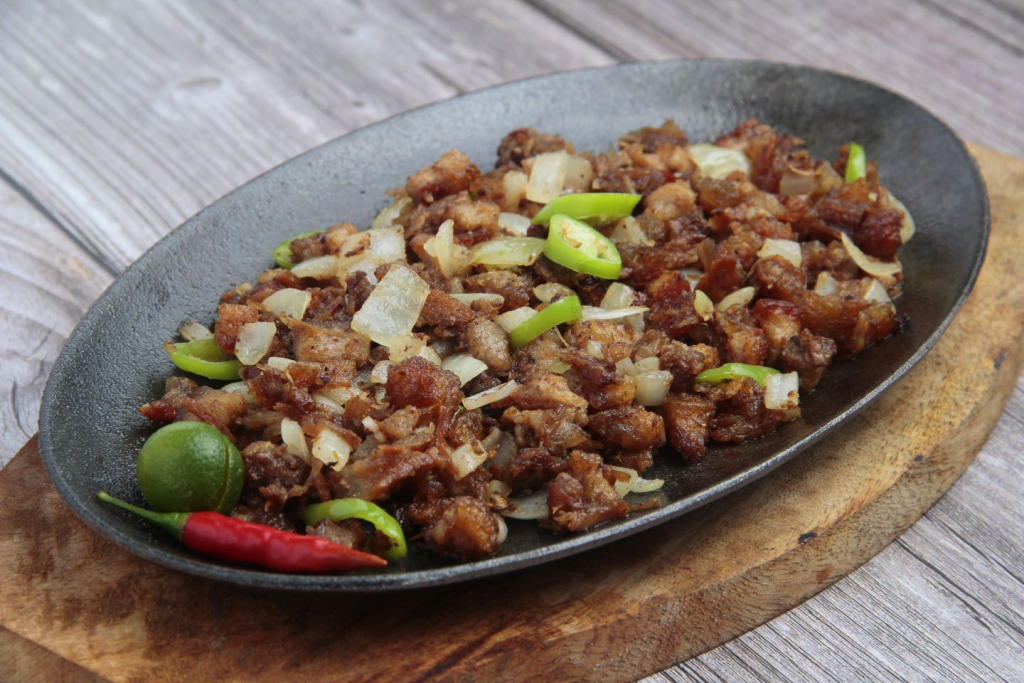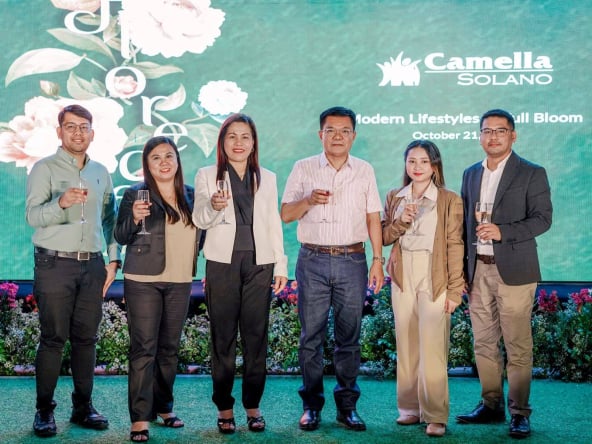
For the longest time, Pampanga has proudly held the title of the Culinary Capital of the Philippines, a reputation built on generations of food artistry, traditional cooking methods, and an impressive lineup of diverse and flavorful dishes that have shaped Philippine cuisine.
Just an hour away from Metro Manila, this province offers an unforgettable gastronomic journey that showcases everything from authentic Kapampangan cuisine to bold innovations that continue to influence the country’s culinary landscape.
In fact, Pampanga’s role in the development of Filipino cuisine is so significant that it has long been trusted to entertain foreign dignitaries with its elevated, elegant, and sometimes adventurous menu.
From chicken saffron rice, crab meat specialties, and duck stewed in local herbs, to more exotic fare like spicy monitor lizard stew and spicy dog stew, Kapampangan dishes reflect a blend of indigenous dishes, Spanish cooking techniques, and constant food innovation.
No Kapampangan table is complete without the bold and flavorful dishes passed down in Kapampangan households, each recipe a piece of cultural heritage. And with cities like San Fernando leading the culinary scene, it’s no surprise that even President Ferdinand Marcos Jr. has expressed intent to officially declare Pampanga as the country’s culinary capital, further solidifying its reputation.
Whether you’re a local foodie or looking to entertain foreign guests, there’s no better place to explore unique Kapampangan dishes and experience the best of Kapampangan cuisine than in Pampanga.
In this article, we dive deep into the culinary contributions of Pampanga, why its popular Kapampangan dishes remain unmatched, and how it earned its rightful place as the heart of Filipino flavor.
Timeless Taste: The Story of Kapampangan Dishes

During the Spanish rule, Spanish friars and sailors taught Kapampangans not only to cook but to master the kitchen using European techniques fused with local traditions. These lessons gave birth to timeless Kapampangan dishes, inspired by the Spanish palate but elevated by the creativity and ingenuity of the local people.
While rooted in Spain’s culinary legacy, their dishes also reflect a fusion of influences from Malay, Mexican, and other cultures, producing flavors that are distinctively Filipino yet globally appealing.
What made Kapampangans stand out was their ability to blend foreign techniques with local ingredients like coconut milk, mole crickets, and even stuffed frogs, turning humble produce into exquisite meals that impressed not only foreign guests but also foreign dignitaries. Their culinary talent was so remarkable that Spanish friars, colonial government officials, and even revolutionaries took notice.
In fact, Kapampangans were commissioned to prepare the best food during high-level gatherings, including the historic proclamation of the First Philippine Republic in Malolos, Bulacan.
The culinary prestige of the Kapampangans has endured for centuries, representing more than just taste, it is a reflection of the nation’s historical encounters, regional diversity, and evolving identity.
As other provinces and ethnic groups brought their own contributions to the table, the Philippines blossomed into a country where all regions contribute their own flavors to the national cuisine. Still, Pampanga remains equally proud of its culinary roots, preserving certain recipes and techniques that date back to colonial times.
Today, food is recognized not only as sustenance but also as a form of artistic creation and visual art, worthy of protection and promotion.
This has led to ongoing efforts from institutions such as the UNESCO National Commission and legislative initiatives like a proposed Senate Bill and House Bill to support culinary heritage and promote sustainable programs that empower local communities and celebrate the Philippines’ rich food culture.
Kapampangan cuisine, shaped by history, enriched by other ethnic groups, and polished through time, stands as a testament to how food can be a powerful link between the past and the present, one that continues to captivate both locals and guests from around the world.
The Flavorful Creativity of Kapampangan Cuisine
The struggles that the Kapampangans faced due to revolt, floods, and the eruption of Mt. Pinatubo paved the way for them to get extra creative when it came to food. According to tourism secretary Bernadette Romulo-Puyat, women and children were left at home during the Spanish colonial period by the men who had to work in Cavite shipyards.
In the 18th century, Kapampangans experienced extreme hunger and famine. And in 1991, Mt. Pinatubo erupted. Because of these experiences, Kapampangans create dishes out of everything in their environment, including insects and frogs, because it saves money and time.
Another reason why Pampanga is the culinary capital of the Philippines is because of the food that originated in the province. These dishes are sisig, tocino, bringhe, and morcon.
Pampanga: Known for its Diverse and Flavorful Dishes
When people talk about the best-tasting food in the Philippines, Pampanga is always part of the conversation. But what sets Kapampangan cuisine apart isn’t just its bold flavors—it’s also the unique cooking techniques that define how dishes are prepared.
The Art of Sangkutsa: A Signature Kapampangan Technique
One of the most distinct culinary practices in Kapampangan households is sangkutsa. This traditional method involves partially cooking and marinating the meat, especially when preparing large batches of food for occasions like town fiestas.
Aside from enhancing the flavor, sangkutsa also helps preserve the dish longer, which is essential in a tropical country like the Philippines.
How Sangkutsa Works
To do sangkutsa, cooks begin by combining the main meat or protein with basic yet flavorful ingredients. These often include water, salt, fish sauce, soy sauce, onions, and garlic.
The mixture is brought to a boil, and the meat is stirred continuously to render its lard. This process continues until the meat is half-cooked, locking in flavors and allowing for easier, faster final cooking later.
More Than Just Flavor, A Practical Tradition
What makes sangkutsa special is that it isn’t just about taste. It’s a method rooted in practicality and tradition.
Used especially during community feasts, it reflects the resourcefulness of Kapampangans and their deep understanding of flavor development, time management, and food safety, all key elements of their reputation as masters in the kitchen.
Live Where Filipino Cuisine Lives—Only with Camella

Living in Pampanga is the dream for foodies. With all the excellent cuisine that the province has, you are guaranteed to have a unique kapampangan dish for every meal in the province. And if you are relocating from Metro Manila, having a real estate property in Pampanga is beneficial because of its proximity, cuisine, and economic opportunities.
Kapampangans are also friendly and considered one of Luzon’s friendliest people. Kapampangans are known to be hospitable towards tourists.
Camella Pampanga is a nine-hectare real estate development in Angeles City. This Spanish-inspired community is strategically located near your favorite Kampampangan restaurants and establishments. Camella Pampanga has unique amenities such as a playground, basketball court, and lush green parks.
If you consider moving in the culinary capital of the Philippines, Camella Pampanga has everything you need. For over 45 years, Camella has been providing homes to Filipino families.

Celebrate Life’s Milestones
at Camella in Pampanga!
Make unforgettable memories in a Camella home.
Our communities are designed to elevate your living experience.

